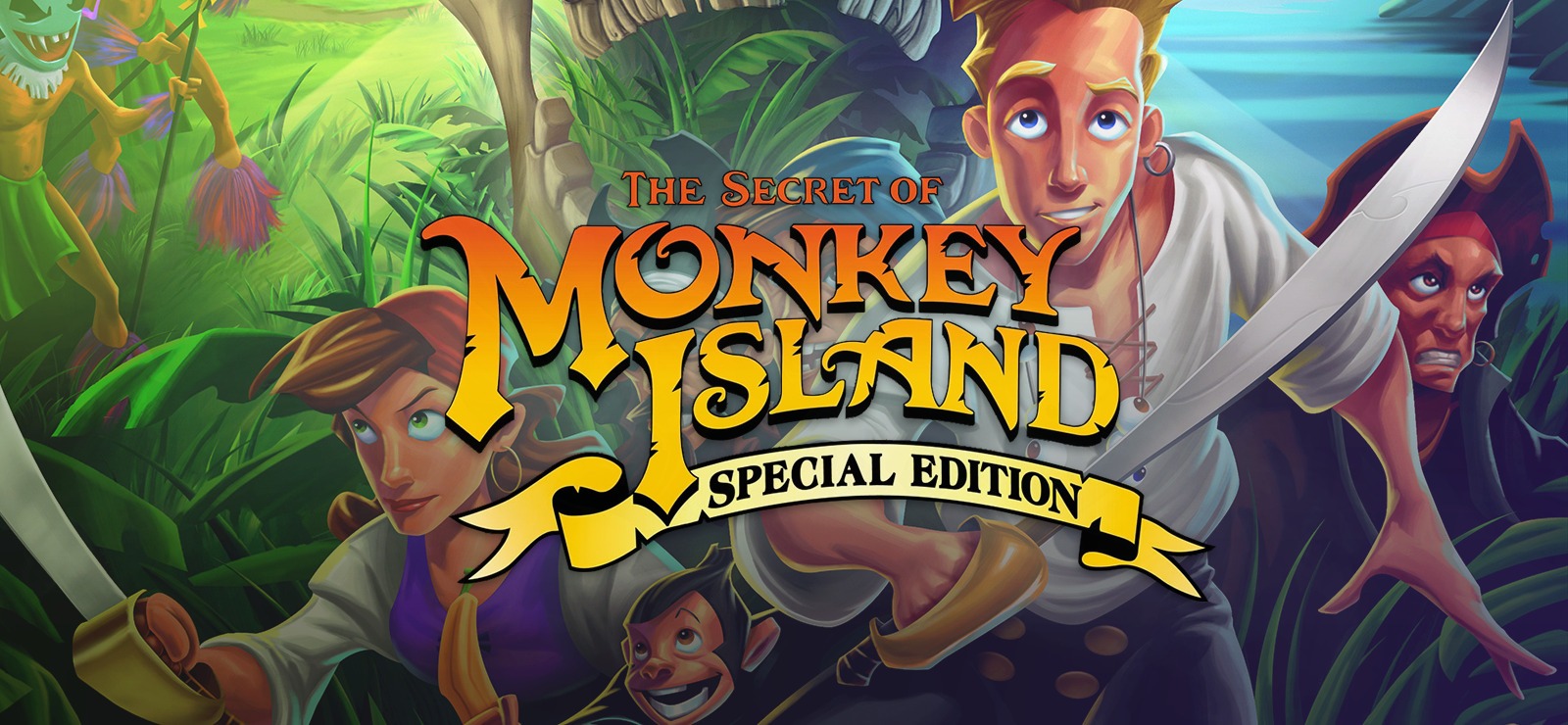In the golden age of point-and-click adventure games, one title stood out with its witty writing, memorable characters, and a unique brand of pirate-themed humor: The Secret of Monkey Island. Released in 1990 by LucasArts, this charming and hilarious game introduced the world to the bumbling but lovable wannabe pirate Guybrush Threepwood and the quirky world of Mêlée Island. Even decades later, its clever puzzles, sharp dialogue, and infectious spirit continue to make it a beloved classic that holds a special place in the hearts of gamers.
The Secret of Monkey Island throws players headfirst into the misadventures of Guybrush Threepwood, a seemingly clueless young man with an unwavering ambition to become a mighty pirate. His journey begins on the tropical Mêlée Island, where he must prove his worth by completing three seemingly ridiculous pirate trials: mastering sword fighting, treasure hunting, and stealing a valuable idol from the governor’s mansion. These initial tasks set the tone for the game’s lighthearted and often absurd approach to adventure gaming.
One of the defining features of The Secret of Monkey Island is its innovative dialogue system, powered by the SCUMM engine (Script Creation Utility for Maniac Mansion). Instead of typing out commands, players select from a list of verbs (like “Pick up,” “Talk to,” “Look at,” “Use”) and objects to interact with the game world. This streamlined interface made the genre more accessible and allowed the writers to focus on crafting witty and engaging conversations.
The dialogue in The Secret of Monkey Island is truly exceptional. The game is filled with memorable lines, clever puns, and a constant stream of humorous exchanges between Guybrush and the eccentric inhabitants of Mêlée Island. Whether he’s trying to impress the sharp-tongued Governor Elaine Marley, trading insults with the fearsome pirate LeChuck, or simply trying to get a grog at the Scumm Bar, Guybrush’s interactions are always entertaining. The game’s humor is often self-aware and plays with the conventions of adventure games, adding another layer of enjoyment for seasoned players.
The puzzles in The Secret of Monkey Island are a delightful mix of logical challenges and outright absurdity. While some puzzles require careful observation and the clever use of inventory items, others rely on more unconventional solutions that often involve lateral thinking and a willingness to embrace the game’s quirky logic. From distracting piranhas with meat to winning a sword fight by trading increasingly silly insults, the puzzles are consistently engaging and contribute to the game’s overall charm. The satisfaction of finally figuring out a particularly head-scratching puzzle is always rewarding.
The cast of characters in The Secret of Monkey Island is one of its greatest strengths. Guybrush Threepwood, with his earnest enthusiasm and often clueless demeanor, is an instantly likable protagonist. Governor Elaine Marley, the intelligent and independent ruler of Mêlée Island, serves as both a love interest and a voice of reason amidst the island’s chaos. And then there’s the menacing but often comical pirate LeChuck, whose supernatural powers and rivalry with Guybrush drive the main plot. The supporting cast, including the mysterious voodoo lady, the perpetually lost Stan the used boat salesman, and the cannibalistic vegetarian tribe, are equally memorable and contribute to the game’s unique atmosphere.
The world of Mêlée Island itself is a vibrant and engaging setting. From the bustling docks and the shady Scumm Bar to the eerie catacombs and the beautiful governor’s mansion, each location is filled with quirky details and interesting characters to interact with. The game’s hand-painted backgrounds and charming pixel art create a distinctive visual style that perfectly complements its lighthearted tone.
The story of The Secret of Monkey Island, while seemingly simple at first, unfolds into a captivating tale of pirate adventure, romance, and supernatural intrigue. Guybrush’s initial quest to become a pirate leads him on a series of hilarious encounters and ultimately pits him against the ghostly pirate LeChuck, who has his own designs on Governor Marley. The narrative is well-paced, filled with unexpected twists and turns, and culminates in a memorable and satisfying conclusion (or does it?).
The game’s success lay not only in its humor and puzzles but also in its accessibility. The point-and-click interface eliminated the often frustrating trial-and-error of older text-based adventures, allowing players to focus on exploring the world and interacting with its inhabitants. This made The Secret of Monkey Island a gateway game for many into the adventure genre.
Over the years, The Secret of Monkey Island has been remastered and re-released, introducing a new generation of players to its timeless charm. These updated versions often feature enhanced graphics, voice acting (which perfectly captures the characters’ personalities), and the option to switch back to the original pixel art for nostalgic fans. The core gameplay and witty writing, however, remain untouched, proving their enduring appeal.
In a gaming landscape often dominated by high-octane action and complex narratives, The Secret of Monkey Island stands as a reminder of the simple joy of a well-crafted adventure. Its humor is timeless, its characters are unforgettable, and its puzzles are consistently engaging. It’s a game that doesn’t take itself too seriously, inviting players to laugh along with Guybrush’s bumbling antics and embrace the absurdity of the pirate life.
The Secret of Monkey Island is more than just a classic adventure game; it’s a cultural touchstone for a generation of gamers. Its influence can be seen in countless adventure games that followed, and its witty writing and memorable characters continue to be celebrated. Even today, the call of Mêlée Island and the yearning to become a mighty pirate resonate with players who appreciate a good laugh and a cleverly designed puzzle. So hoist the mainsail, grab your rubber chicken with a pulley in the middle, and prepare for a swashbucklingly hilarious adventure that still holds up as one of the best point-and-click games ever made. The secret to its enduring appeal? It’s simply good, clean (and slightly silly) fun
